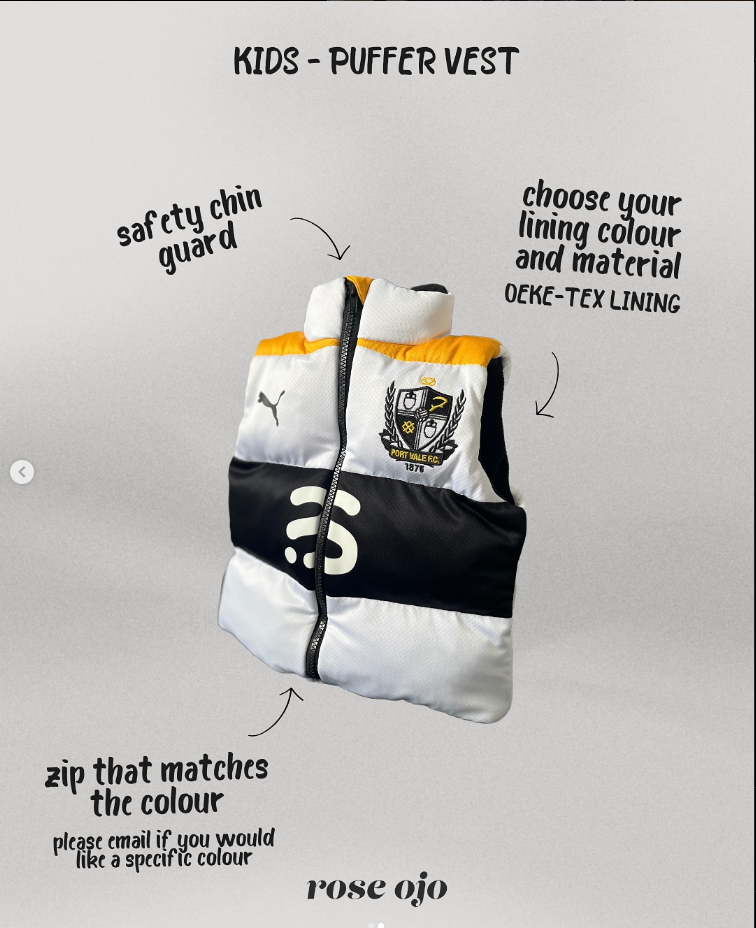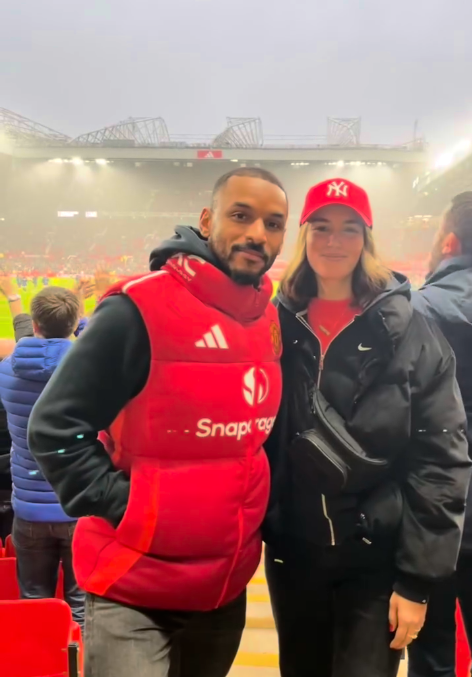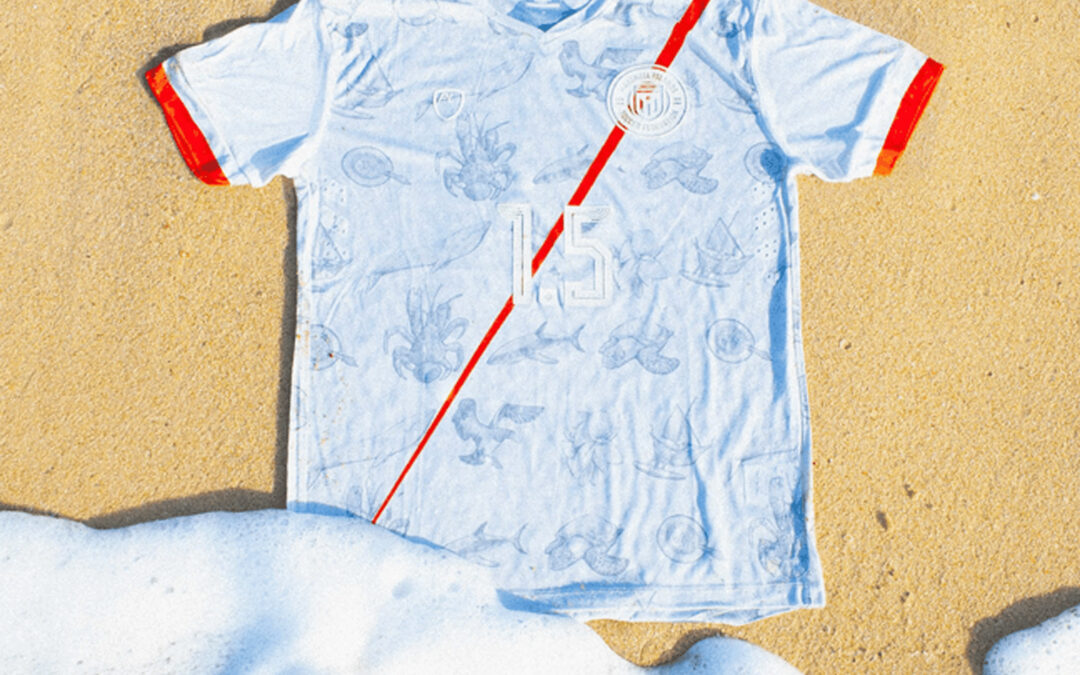There are two types of people when it comes to football shirts. The collectors – who frame them, guard them like gold and remember the exact minute the player on the back of their shirt bagged a last-ditch winner. And then there are the wearers – those who throw them on over a hoodie, sport them down the pub, or show them off in local five-a-side games. But for those who fit into neither camp, and just have old shirts lying around, there is a modern and sustainable third option: Upcycling.
This is the creative process of transforming old or unwanted clothes, like worn football shirts, into new products or designs, giving them a second life instead of mindlessly throwing them away. The idea has been around for a long time in fashion, especially with the rise of sustainability in the last ten years or so, and most notably became a trend in sport in the NFL, when fullback Kyle Juszczyk’s wife, Kristin, went viral for creating bespoke puffer jackets from NFL jerseys, which were then worn by stars like Taylor Swift and Simone Biles. These creative jackets became statement pieces and showcased a creative way to upcycle old sportswear.
When Shrewsbury Town midfielder Funso Ojo and his wife Julie Herman stumbled upon this online, an idea immediately sprung to mind – this could be done for football (and by that they meant proper football). It was from here that they created their fashion business ‘Rose Ojo’ in 2024, based solely around upcycling old football wear into brand new fashion pieces.
“I started playing around with some of his old Port Vale shirts last season, and the response was unreal.” Julie told us. “A few of Funso’s teammates asked me to make something for them too, and that’s when we started thinking, maybe there’s something in this.”

The couple now run the business from their home loft, and the core of their work focuses on transforming old replica kits into puffer vests, bomber jackets and custom outerwear. And the demand has been rising fast.
“I think we hit the right moment,” Julie said. “People are way more aware now of how much clothing waste there is. As someone who understands the fashion industry, I don’t want to make something that just adds to the problem with anything I produce.”
According to Wrap UK, more than 300,000 tonnes of textiles go to landfill every year in the UK, and football shirts, despite being polyester, aren’t immune. They’re designed to be replaced annually by clubs and subsequently by fans as well. A new home kit every season, unique third kits, special one-offs, anniversary designs; it all adds up. Take Napoli for example, who released four separate ‘special-edition’ shirts for Diego Maradona in the 2021/22 season following his death, and were criticised for doing so, with some accusing the Gli Azzurri of capitalising on the event for financial gain. It’s safe to say clubs make a lot of shirts.
Joanna Czutkowska is a Doctoral Researcher at Loughborough University, and studies the sustainability of fashion in sports industries and the big problems that future generations will potentially face as a result of waste. She spoke to the scale of the waste produced by the football industry and the problems that it can cause.
“60% of professional football kit is never used, and is actually just destroyed even before it’s ever worn. If you think about that from an environmental and economic point of view, it just doesn’t make sense. That’s about 1.5-3.5 million items per season, which is about 108 million Euros that is being lost and basically set on fire each season – it’s equivalent to the transfer fee of a player like Jude Bellingham.”
Joanna also highlighted the uniqueness of football shirts as items to consumers and echoed the issue of frequent shirt production combined with short shelf-lives.
“Football interests me particularly because it’s the idea of having this garment that is so interconnected with a club, their history and heritage, it has huge emotional value. But the club releases a new kit every season, so the shelf life of that shirt is about 10 months now, and it’s not just one shirt, it’s your home away and third kit.
In 2023, UEFA introduced Circular Economy Guidelines as part of its Football Sustainability Strategy, encouraging clubs to rethink their production of kits and equipment. The guidance outlines practical steps like reducing waste, reusing kits, and recycling materials as a way to tackle football’s environmental impact and shift towards a more sustainable model.
“I like the hierarchy that UEFA have created in their circular economy guidelines, and I think for them to actively suggest to clubs ways of reducing the amount of football apparel was a very bold step” Joanna said.
While these recommendations from UEFA are aimed at clubs and their manufacturers, the responsibility for change in sustainable practices doesn’t just lie with them. The football community as a whole has a role to play in driving sustainability from the bottom up. That’s where independent makers like Julie Herman can make a real difference, and why having a player like Funso Ojo, a known player in League One, promoting and helping to manage the brand is an important thing to get others in the football community more engaged in matters around football shirts and how to use old apparel more effectively. It’s a model that proves environmental action doesn’t have to be too corporatised, and rather it can be crafted with care and individuality at its core.
For Julie Herman and Rose Ojo, that ‘bold step’ from UEFA aligns directly with the mission behind their business. Julie is putting the idea of circular economy into practice at a grassroots level by taking individual shirts that might otherwise be forgotten, and turning them into wearable pieces that still celebrate their history, as opposed to seeing them thrown away.
Reflective of the humble beginnings and environment of Rose Ojo, Julie’s approach is hands-on. She studied fashion in Belgium and, while she does have the training, she still turned to YouTube tutorials when creating her first puffer vests.

“I always ask for shirts two sizes bigger because they need the space for padding, but I can add panels if someone brings one in that’s too tight,” she explained. “I don’t want people to go out and buy new shirts just for the design – the whole point is making use of what you already have.”
She’s also careful not to alter the elements that fans care about most. Badges, names, numbers and memorable logos are instead framed and made central to the pieces. One recent design took a used retro Liverpool shirt (the famous 1995/96 home shirt) and turned it into a high-neck zip-up vest, preserving the design and logos in full.
By revamping used shirts, the upcycling process also harnesses nostalgia in order to make the pieces more special and personal. Each shirt carries different and unique memories, whether it’s tied to a cup run, a promotion, or just a favourite player. A huge positive of the upcycling process and circular economic model is that it preserves that connection while also giving the benefit of creating something fresh and brand new.
Although it’s not just personal commissions. The brand has gained traction overseas, with fans in the US and Europe ordering custom pieces. And while Rose Ojo remains a small, independent operation, Julie and Funso say they’re starting to consider how they might scale up responsibly.
“We want to keep it authentic,” Julie says. “We’ve had messages from people asking us to do full collections or collabs, and that’s exciting, but we want to grow in a way that keeps the meaning in what we do.”
Upcycling in football isn’t new – it just hasn’t always been fashionable. In the past, old shirts might have simply been thrown away, passed down to kids, or repurposed into Sunday league training gear. But now, there’s a more visible wave of people being creative in how they reuse their football wear.
Even bigger clubs are starting to take notice of more sustainable approaches to their apparel. In 2022, Real Betis launched a partnership with Ecoalf to create a recycled kit, and launched a kit made from invasive brown algae and recycled plastic from the Andulusian coast. German side Hansa Rostock unveiled upcycled seat covers made from old stadium banners, and Adidas’ “Made with Parley Ocean Plastic” kits have brought sustainability into the design process, albeit on a much larger scale.
Where Rose Ojo sets itself apart however, is in its commitment to one-off, deeply personal items.
“We’re not trying to produce hundreds of pieces a week.” Julie said. “It’s me at the sewing machine, cutting these myself.”
As football kits continue to change every season, Rose Ojo shows that football fashion can be both timeless and sustainable. By turning old shirts into something new and special, they are setting a great precedent for how the world of football can be creative and sustainable in upcycling their incredibly precious old shirts.



